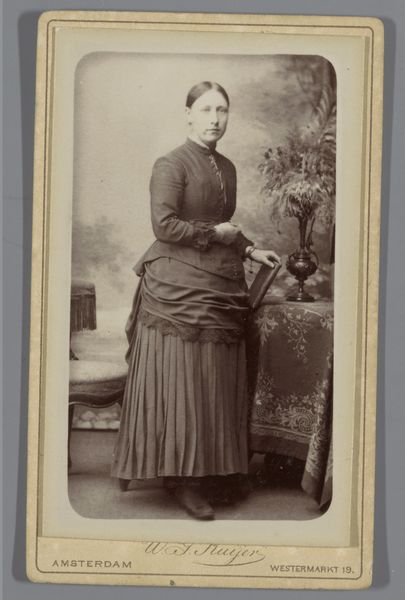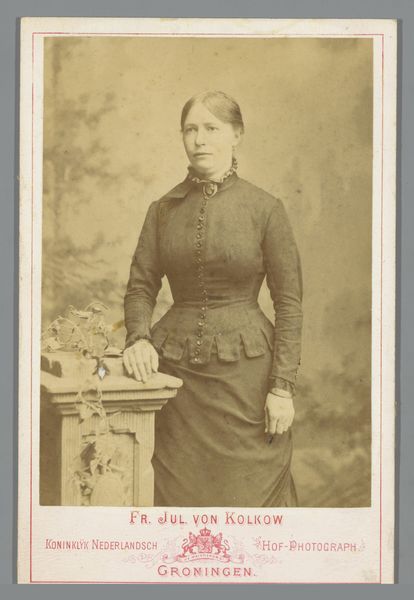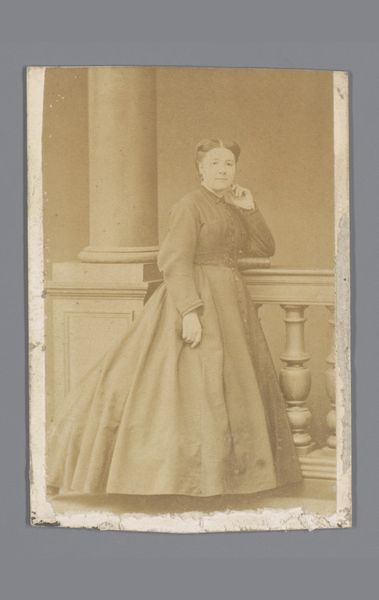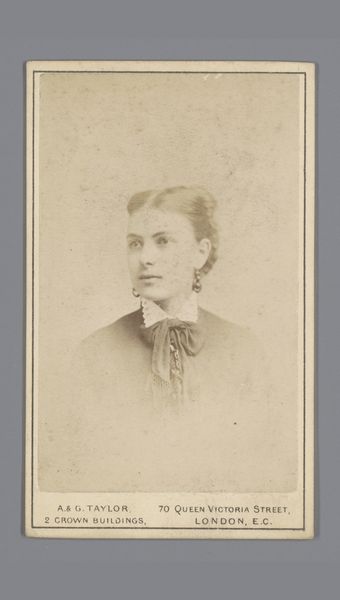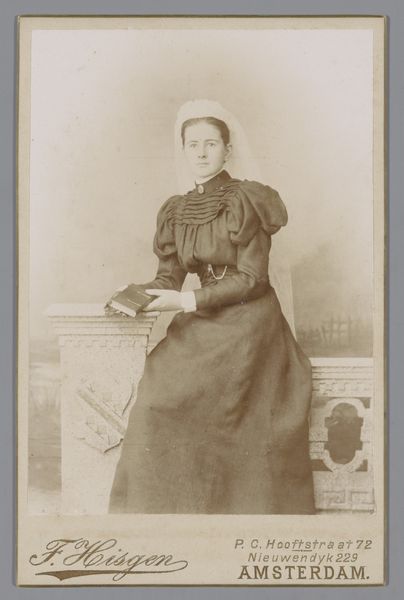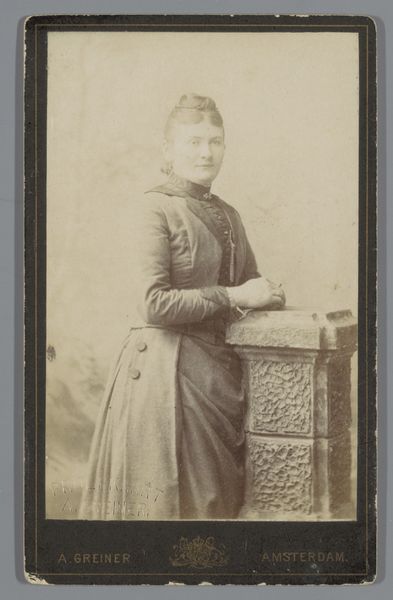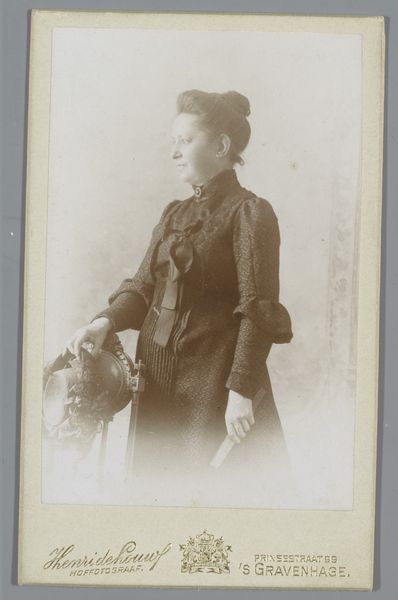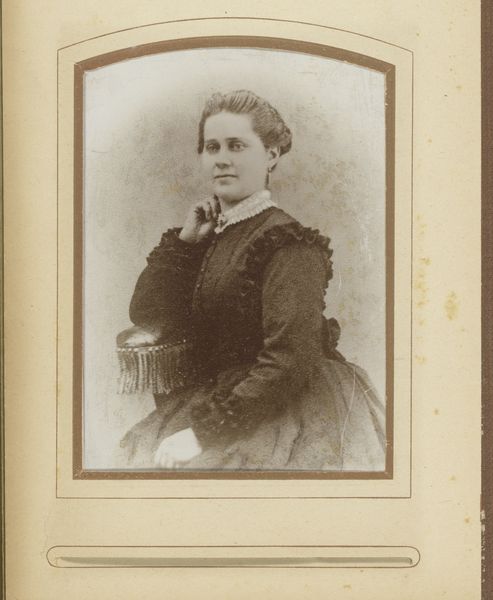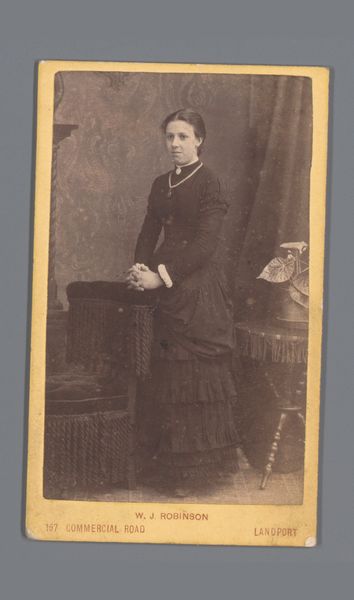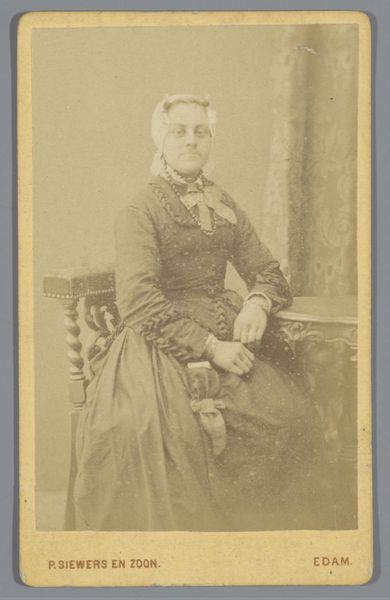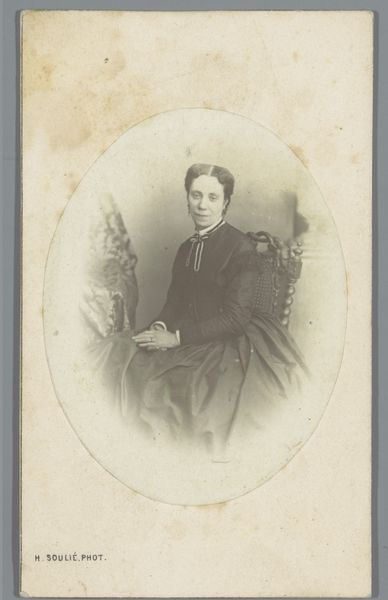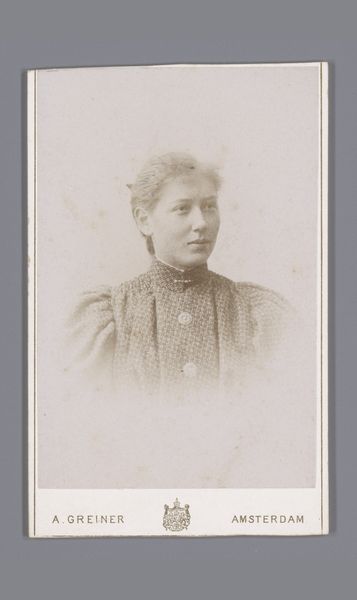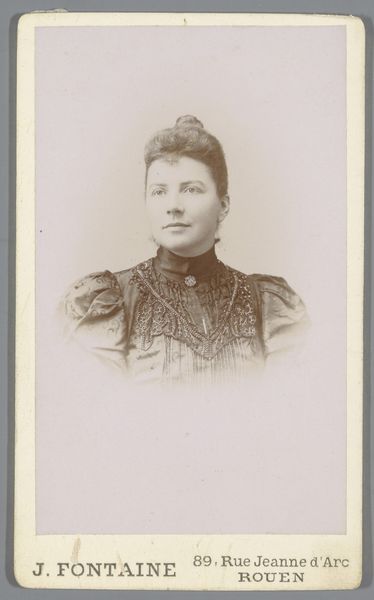
photography, gelatin-silver-print
#
portrait
#
photography
#
gelatin-silver-print
#
realism
Dimensions: height 106 mm, width 67 mm
Copyright: Rijks Museum: Open Domain
Editor: Here we have an intriguing gelatin-silver print, a portrait of an unknown woman by Johannes Ephraim, created sometime between 1880 and 1905. The image feels very staged, very formal in its composition. What strikes you about this work? Curator: The print provides a rich text for formal analysis. Consider the way the photographer utilizes a shallow depth of field, throwing the background into a soft focus, concentrating our attention on the figure. This isolation elevates the subject, while also creating an interesting play between planes of focus. What meaning do you derive from this use of focus? Editor: I hadn't really considered the meaning of the depth of field, but that isolated feeling really matches the woman's somber expression. It also spotlights the patterns on her dress. The texture really pops out at you. Curator: Exactly. Look closer at the contrast: the high contrast in her dark, floral dress pulls focus to the torso and directs our eyes upwards, past the solid structure where her hands rest and toward the light reflecting on her face. It's a visual strategy, directing us towards her emotional presentation. Editor: So the floral patterns aren't just decorative but part of the structural composition? They guide your eye around. Curator: Precisely. The dress becomes integral to understanding the artist’s intention through formal methods. And the photographic technique—the gelatin silver process—yields a clarity that enhances these tonal relationships. Are you now able to see how technique influences meaning? Editor: Absolutely! I realize now how focusing on form can tell us so much, even about an anonymous portrait. It's all in how the light, focus, and pattern interplay. Curator: Indeed, even without knowing the sitter, formal analysis allows us an insight into the choices and possible intent of the photographer.
Comments
No comments
Be the first to comment and join the conversation on the ultimate creative platform.
